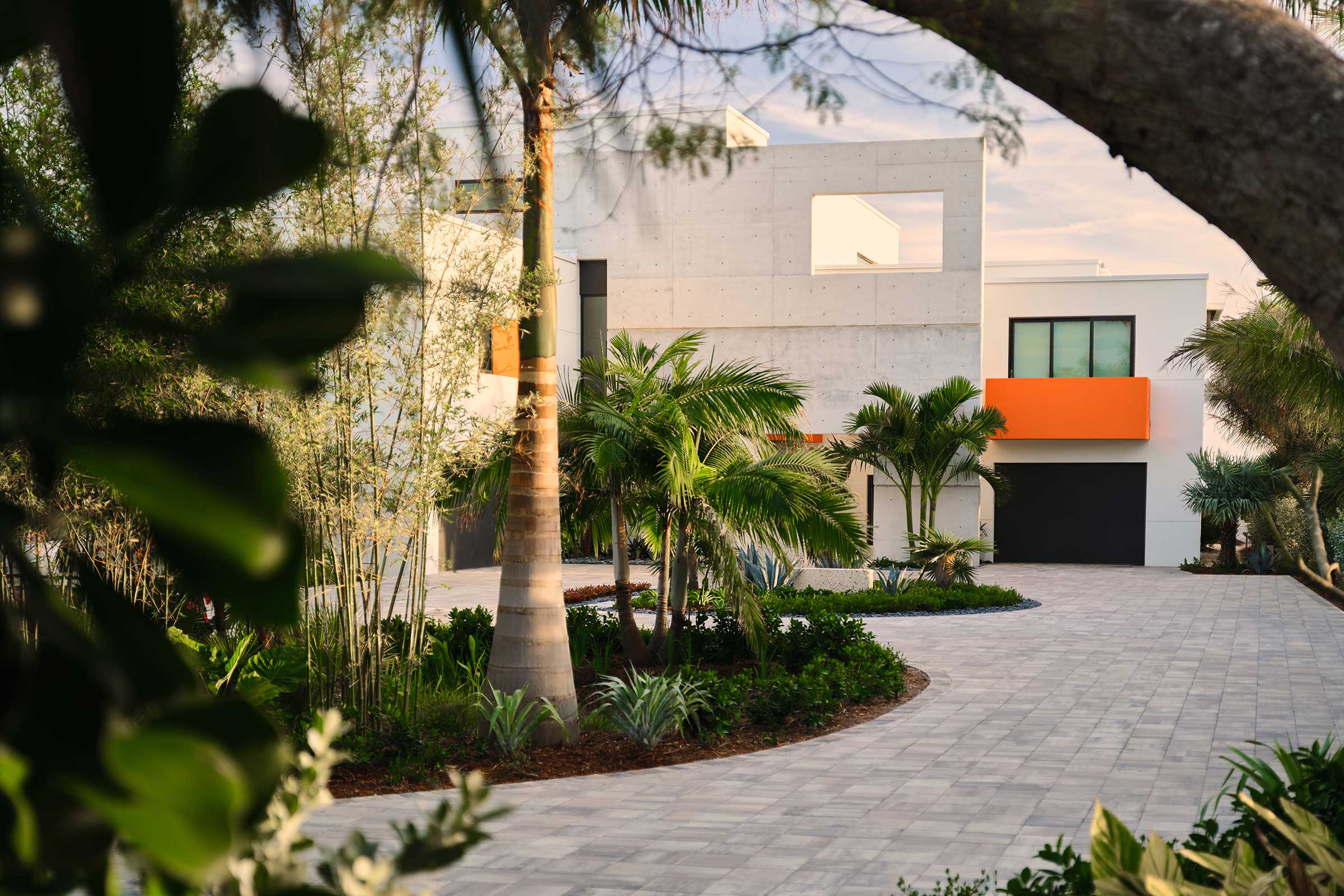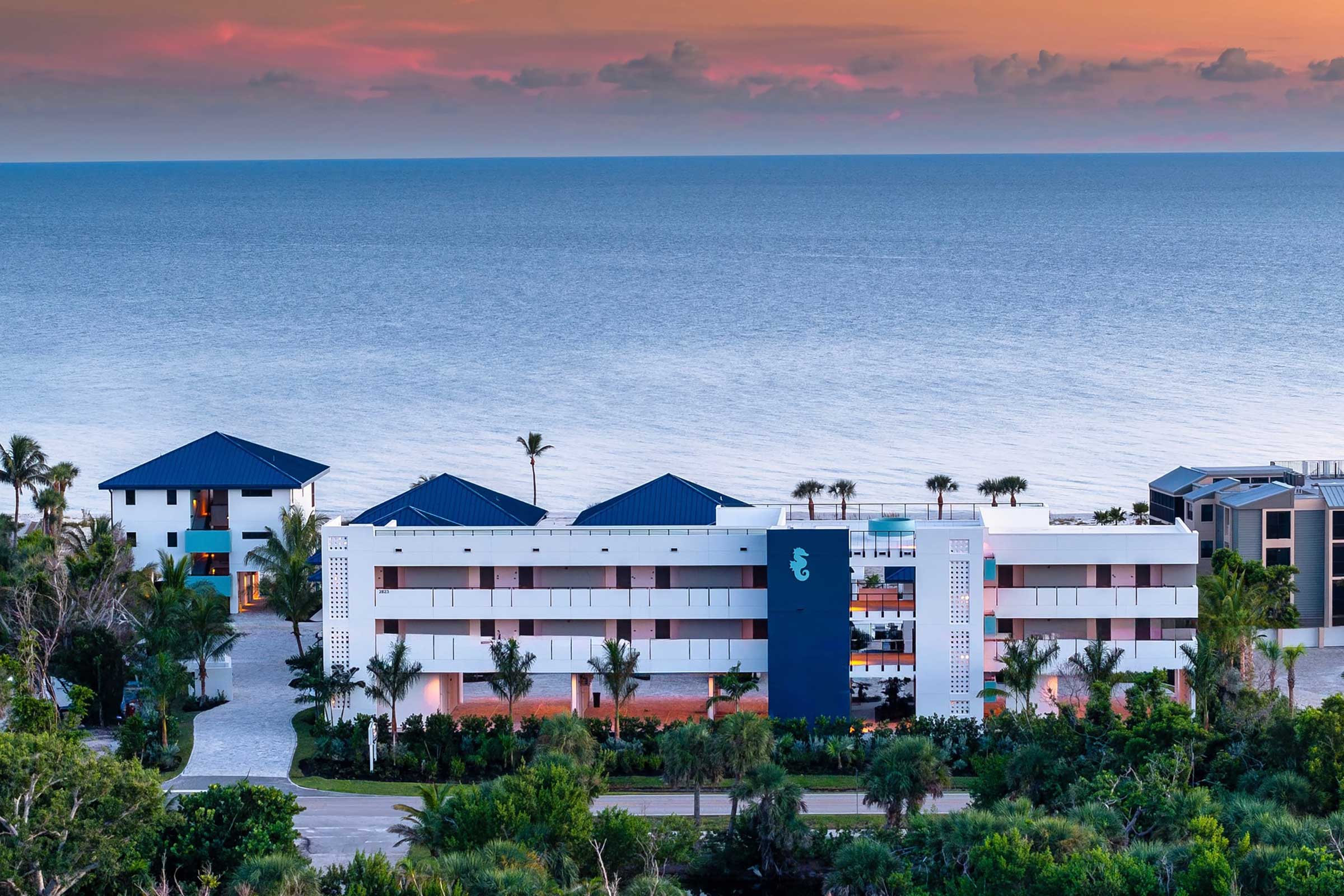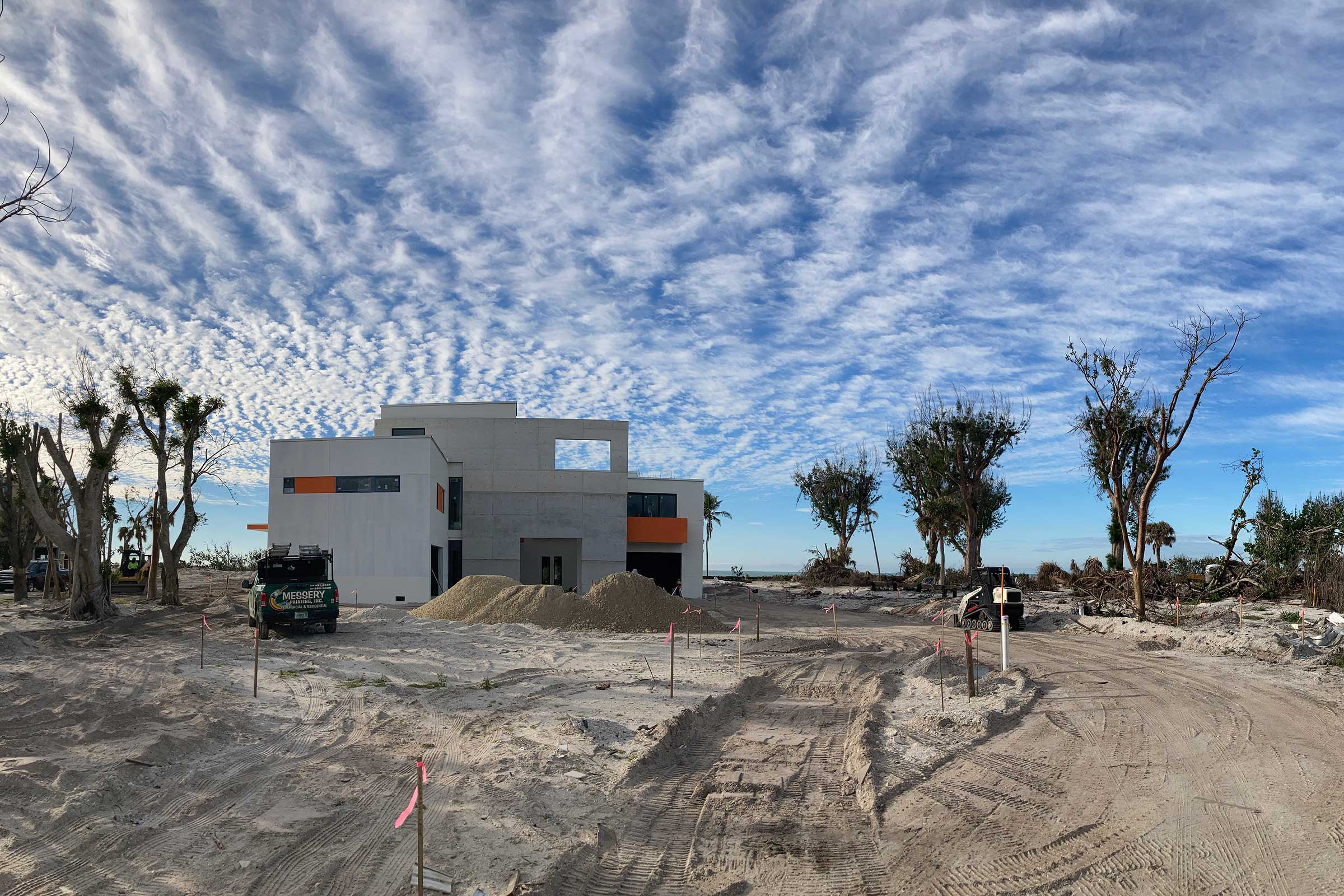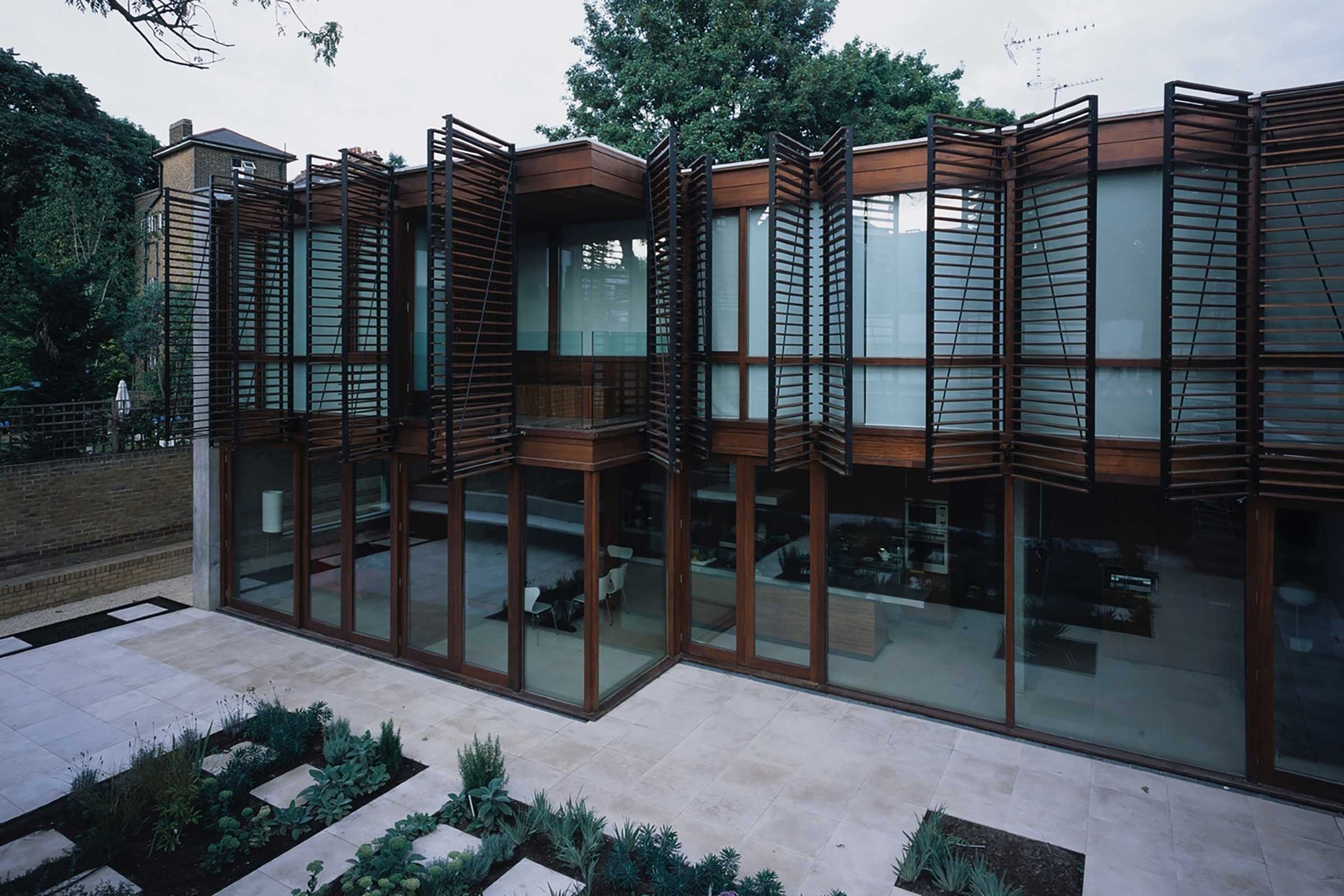 Sanibel Island, Florida © Dan Cutrona
Sanibel Island, Florida © Dan Cutrona
 Shalimar Beach Resort
Shalimar Beach Resort
Learning from the past, for the future
Joyce grew up holidaying in Florida with her family, and she mentions how her parents and grandparents’ generations brought design styles, materials and methods from their northern homes with them: an unfortunate mistake in a humid and wet climate prone to hurricanes.
‘The devastation was incomprehensible’
Her architectural work today is more in tune with the realities of life in Florida, particularly in the aftermath of 2022’s Hurricane Ian and the destruction it wrought on the barrier islands where she frequently builds. It quickly became clear that resilience must prevail over aesthetics, and that structural engineers would be key to the rebuilding effort. She prioritises working with the climate rather than ignoring or opposing it, using materials like masonry in lieu of traditional wood piling structures, and raises living spaces well above the sand, to allow flood waters to pass under the buildings, rather than destroying them.
 Sanibel Island, Florida – after Hurricane Ian
Sanibel Island, Florida – after Hurricane Ian
Learning from London
‘That house is my dream in any climate…’
Joyce landed in London in 1987, studying Architecture at Kingston University, before founding Azman Owens Architects in 1993. The practice created inspired designs for private, high-end retail, exhibitions and more, with clients like Alexander McQueen, Isabella Blow, Guido Palau and even a future prime minister.
Though Florida and London might seem poles apart, Joyce took inspiration from Floridian design with her when she crossed the pond – at that time ‘no one was doing indoor-outdoor stuff’, which was the objective of the remarkable home in Islington she designed with Azman, centred around a courtyard that spans the living space and outdoor space.
Though the levels of sunshine in each location differ greatly, glass is a vital material to help residents connect with the weather, even if it is raining – though she suggests leaving the glass roofs in London. For her own London home, she pursued a ‘Floridian take on a conservatory’ in part for aesthetics but also as a means of survival ‘because I couldn’t bear the darkness all the time…but loved a view of the sky even if it was raining’
 Aberdeen Lane, Islington, London © Keith Collie
Aberdeen Lane, Islington, London © Keith Collie
Learning from Florida
Wherever you are, ‘it’s all about designing for your climate’ – after experiencing one of the hottest summers ever, many architects in London are looking to sunnier climes for inspiration, and that dialogue can run both ways.
Joyce notes that her time in London taught her ‘a lot about rain, humidity and rising damp’ – something familiar to anyone who has lived in Florida, where architects have historically misunderstood the climate, attempting to recreate the mid-century styles of the much dryer California.
This became apparent in the early 2000s, exactly when Joyce was making her way back to Florida. It was then that she decided to focus her attentions on coastal architecture: building appropriate, resilient, responsible buildings that respond to their location.
In Florida this means insulation to keep the cold in and designing in protection from the hot sun – without losing the daylight and the benefits that it brings, including saved energy. For the many homes she designs on the islands that dot the Floridian coasts, the fierce salt air limits external finishes, so you probably won’t see many traditionally ‘pretty’ buildings, like those found in California and Australia.
Materials like recycled plastics and masonry have stronger sustainability credentials here, quite simply because they can withstand the salt air, in a way that steel and wood cannot. Another key design consideration for Floridians is the presence of bugs – houses here need screens, misting systems around the pool and fans indoors and out, to keep them at bay.
And finally, her key advice for creating buildings that will keep their cool as temperatures rise is ‘shade and ventilation… you’ve got to figure out how to get the air to move through those buildings and you’ve got to shade them.’
 West Gulf Drive, Florida © Diana Todorova
West Gulf Drive, Florida © Diana Todorova
Get ready for WAF
This year the much-loved World Architecture Festival lands in the US for the first time: taking place over three days at the Miami Beach Convention Centre: click here to find out more.
Joyce is one of the 164 judges, representing 37 countries, that will pore over more than 400 entries from across the world. She’s most looking forward to that global connection – meeting peers and new faces from around the world and connecting them with Florida’s vibrant architecture and design scene.